As we unfurl the flag on Independence Day each year, we take the tricolor for granted as our national flag. But do you know the story behind the Indian national flag? Like many other things about India, this story too, is packed with history and drama.
“I must say that if the flag of the Indian Union will not contain the emblem of the charkha, I will refuse to salute the flag.“
Mahatma Gandhi
How’s that for a start?
Well…Gandhi was not happy with what was finally adopted as our national flag. But to know why, we must rewind about a 100 years.
The Quest for a Flag
While flags had been in use by kings and dynasties in India for a long time, 100 years ago, India didn’t have a national flag.
In 1863, Queen Victoria accorded a distinctive blue banner to the Indian viceroy of her Empire. It had the Union Flag in a corner and a Star of India capped by the royal crown. But that represented British India. Slowly, as an Indian national consciousness began to emerge, so did the need for a symbol to represent that idea of India.
In 1907, Madame Bhikaji Cama, a Parsi revolutionary from Bombay raised a flag at the Second Socialist International meeting in Stuttgart declaring that India wanted independence. At this time she unfurled a flag with three stripes of red, green and yellow representing Hinduism Islam and Buddhism. It had eight white lotuses for the eight provinces of British India on the top green band, the word Vande Mataram in the middle yellow band and a white crescent and sun painted in the bottom red band, standing for Islam and Hinduism.
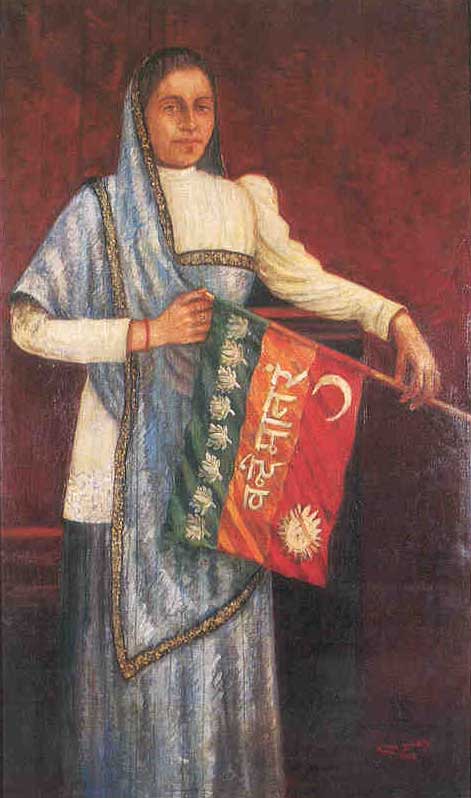
This flag was inspired from another one, unfurled in Calcutta in 1906 by Suchindindra Prasad Bose, a freedom fighter, which had the lotus on the top band and the sun and crescent at the bottom. But the colour scheme of this one was different. The three colour bands in this one were orange, yellow and green.

In 1916, the Home Rule movement launched by Annie Besant and Bal Gangadhar Tilak, adopted another flag for India – with five red and four green alternating bands, seven stars, a crescent and a star, and the Union Flag in one corner.
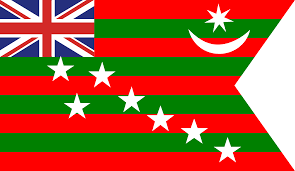
All such flag unfurling events however were reasonably subdued affairs, not creating too much of a furore in the British camp. That changed when Gandhi entered the fray. When Gandhi threw in his weight behind the call to have a national flag, the movement took on a new momentum.
Gandhi insisted that India must have a flag and that such a flag must be made of khadi or handspun cloth, around which he had rallied Indians with the call to Swadeshi.
“A flag represents an ideal, the unfolding of the Union Jack evokes in the British breast, sentiments, whose strength, it is difficult to measure. The stars and stripes mean a world to the Americans, the star and crescent will call for the best bravery in Islam. It will be necessary for us Indians – Hindus, Muslims, Christians, Jews, Parsees and others to whom India is their home to recognize a common flag to live and die for.“
Mahatma Gandhi
Several people poured in their ideas regarding what the design of the flag ought to be. Sister Nivedita, disciple of Swami Vivekananda for instance, recommended a flag with a thunderbolt as the symbol of India.
It was finally a design submitted by Congress worker Pingali Venkayya from Andhra that won the day. Venkayya had sent in over 30 designs in a booklet he had prepared for the purpose and Gandhi had been very impressed with his dedication to the cause. Selecting one such design, Gandhi decided that the flag adopted to represent India must have the charkha in the middle as it was the metaphor for the attainment of swaraj.
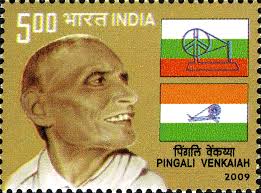
In 1922-23, a jhanda movement was begun in Nagpur with leaders and common folk marching bravely with the tricolour, rallying around the flag which gradually became a symbol of India’s resistance to British colonial rule. Hoisting the tricolour in various places like post offices, police stations and other government buildings to defy British rule became a method used by freedom fighters. As the British realised that the act of hoisting such a flag was giving strength to the freedom movement, they clamped down heavily on such acts of transgression. Hundreds fell to lathis and bullets for the simple act of hoisting a flag.
The charkha adopted by Gandhi in the flag too was a potent emblem, one that ordinary Indians related to as a symbol of people’s power.
‘You don’t find on our flag a tiger or a lion or a unicorn but only a charkha. It represents industry, good will and our new weapon against brute force. The government wouldn’t have minded if we’d put the sign of a gun on it, as they have bigger guns. But the charkha represents thirty crores of charkhas and can’t resist its force.’
C Rajagopalachari
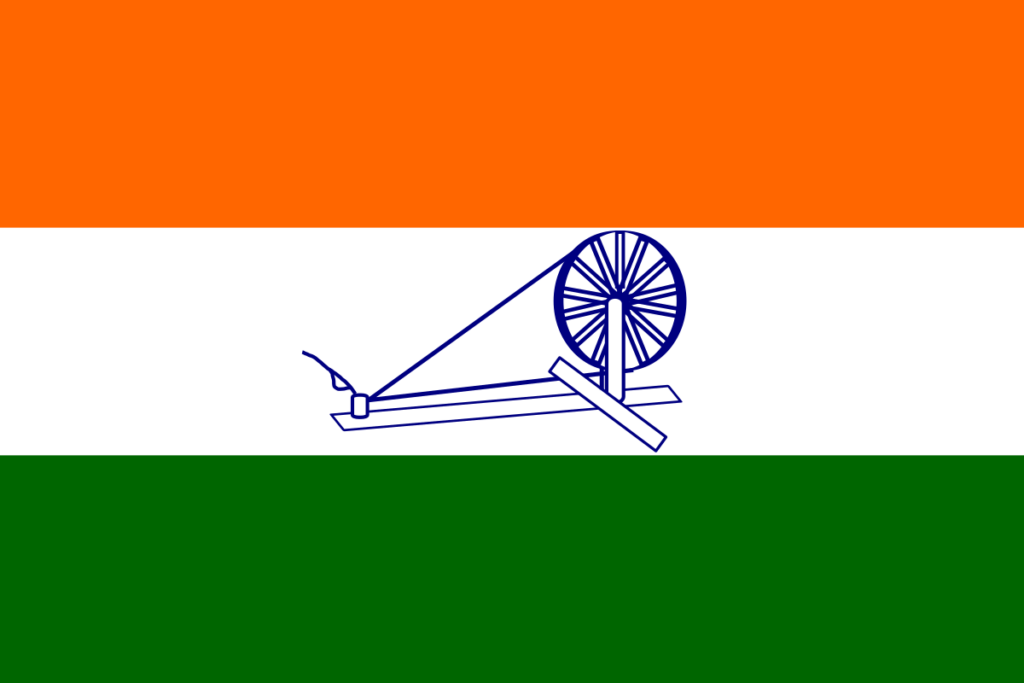
Interestingly, the charkha was not finally adopted into the Indian flag.
National Flag for Free India
As India was going to walk into the dawn of freedom, an ad-hoc committee of the Constituent Assembly was formed to consider the issue of finalising a national flag. After debating many permutations and combinations for the new flag, it submitted its designs in July 1947 and a resolution was passed to adopt our current flag as the national flag of India.
But Gandhi was not happy.
“I must say that if the flag of the Indian union will not contain the emblem of the charkha, I will refuse to salute the flag. You know the national flag of India was first thought of by me, and I cannot conceive of India’s national flag without the emblem of the charkha.“
Mahatma Gandhi
But despite this opposition, Gandhi’s charkha was put aside for the Ashokan Chakra. Nehru had to convince him that the 24 spoke-wheel from the Sarnath piller of Emperor Ashoka that had been adopted in the national emblem, was only the spinning wheel without the spindle. Besides, Nehru pointed out a practical problem.
“Normally speaking the symbol on one side of the flag should be exactly the same on the other side, otherwise there is difficulty which goes against the conventions. Now the charkha as it appeared previously on the flag, had the wheel on one side and the spindle on the other. If you see the other side of the flag, the spindle comes the other way and the wheel comes this way. There was this practical difficulty. Therefore after considerable thought, we were convinced that this great symbol which enthused the people should continue in a slightly different form.
Jawaharlal Nehru
On why the Charkha was not adopted in the national flag
In a surprising twist, a suggestion was made by Viceroy Mountbatten in the last days of the Raj. As both India and Pakistan were to remain in the British Commonwealth, Mountbatten tried to design a flag for the fledgling nations and suggested that the Union Jack be retained in the top corners of both flags (much like Australia and New Zealand have).
Nehru dismissed the suggestion outright, as did Jinnah, both thinking it was outrageous. And rightly so. Among the many things the two leaders bickered about and disagreed on, they found common ground in opposing this audacious suggestion.
“Ashokan wheel represents to us the wheel of law, the wheel of dharma.”
Sarvepalli Radhakrishnan
Some people asked questions about the three colours – saffron white and green on the flag. Did they depict Hinduism Islam and other faiths? Gandhi dismissed those concerns and insisted that saffron represented sacrifice, white stood for purity and green represented hope.
So this independence Day, as we unfurl the flag and sing the anthem, let us remember that the Indian flag means more that just the idea of India. It represents our history, our struggle for freedom and the aspirations of generations of Indians.
IIN 1942, 17-YEAR OLD KANAKALATA BARUA GIVES UP HER LIFE TO HOIST THE FLAG. FIND OUT WHY THE FLAG EVOKED SUCH FEELINGS IN MY BOOK.
RELEASING THIS DECEMBER!
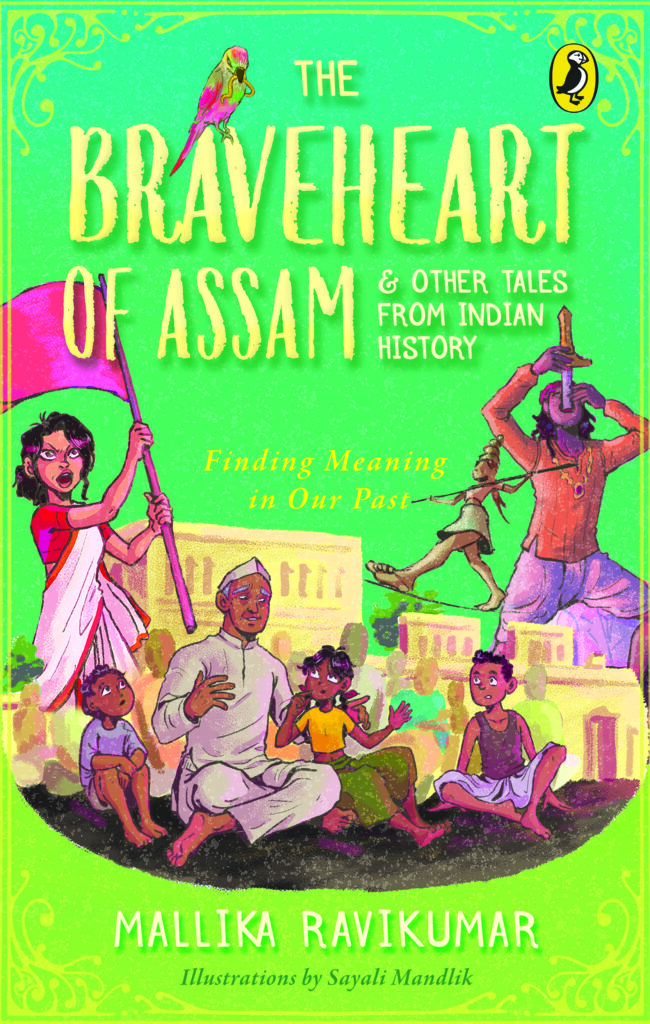
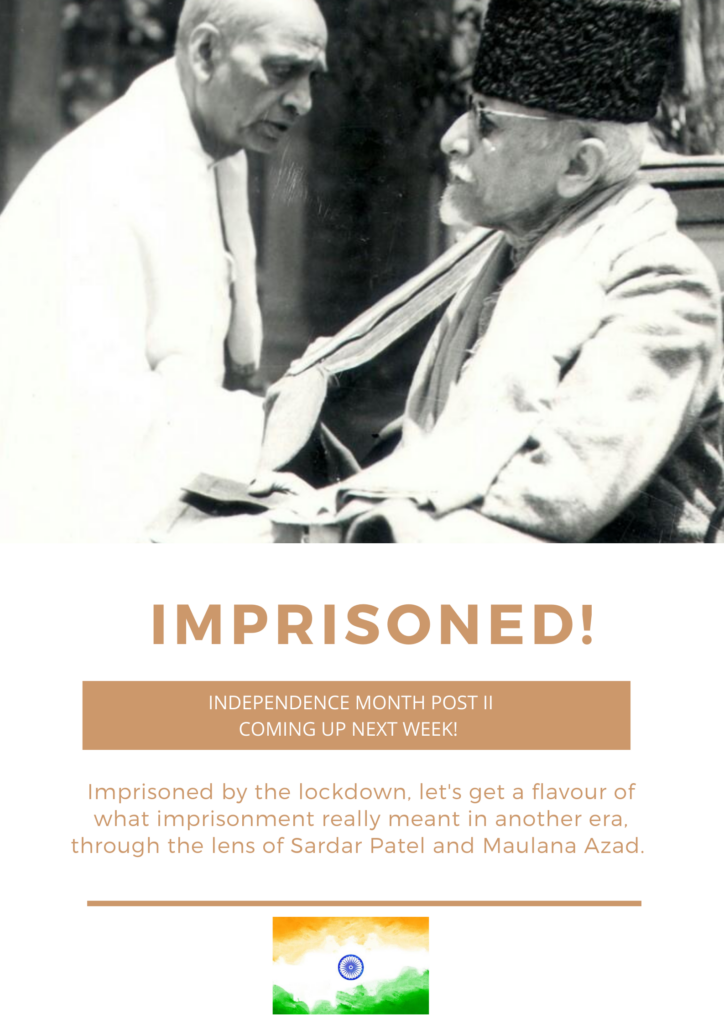

Ramanjit Garewal
August 15, 2020 - 11:01 am ·*?… Jai Shree Ram…?*
Dear Malika…?
Very informative…
Very well researched…
Very interestingly presented…
Keep it up…?
I am at my wit’s end…
As to why we refer to our flag as the tiranga or tricolour…
When it is not a tiranga or a tricolour…
When it actually has 4 colours in it…
And as to who started this wrong labelling of our flag as a tiranga and calling it so…
Why are the Dharma Chakra and its blue colour largely ignored…
The Dharma Chakra is still mentioned for the values it represents…
But the blue colour is rarely mentioned…
I have been labelled by some people owing blind allegiance to a monochromatic ideology as an Anti National for raising this issue…?
I trust you will find enough merit in the issue raised by me to research the same academically in your usual meticulous manner…
Tumhara das…?
Hugs…
Love…
?
*?… Jai Shree Ram…?*
mallikaravikumar
August 15, 2020 - 11:44 am ·Thank you Ramanjitji for your kind words. Yes, blue is a very key colour and the Ashok Chakra a key element of the flag. Totally with you. Tiranga was a term that originated before the adoption of the blue Ashok Chakra in the national flag in 1947 and it just stayed on as an endearing reference to our flag.
Lesley
August 15, 2020 - 1:13 pm ·Thanks for the explanation of the colours. I was told, perhaps as a joke (though why one would want to joke about our flag is not clear), that it represented dhal, rice and green leafy veg. I did think agriculture must come into it somewhere, but it seems i got it wrong.
mallikaravikumar
August 16, 2020 - 12:21 pm ·Haha…interesting interpretation with our staple food. Not heard this one before. Thanks. It’s a nice way to introduce the idea to a child.
Bhishma Narkar
August 15, 2020 - 9:02 pm ·Perfect reply for Tiranga. The history of it is interesting. Now it is symbol of our patriotism.
Jay Hind
Vande Mataram
mallikaravikumar
August 16, 2020 - 12:19 pm ·Thank you Sir for writing in and for your appreciation. Yes…it is interesting how a flag embodies so many emotions.